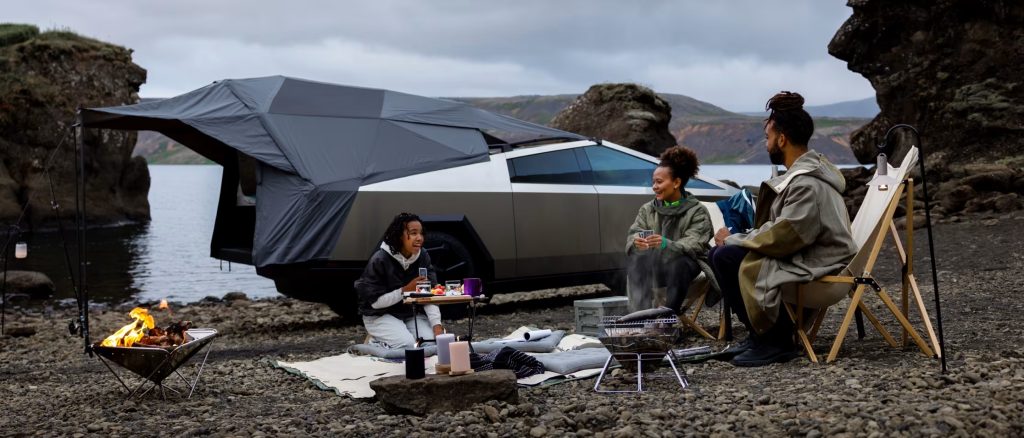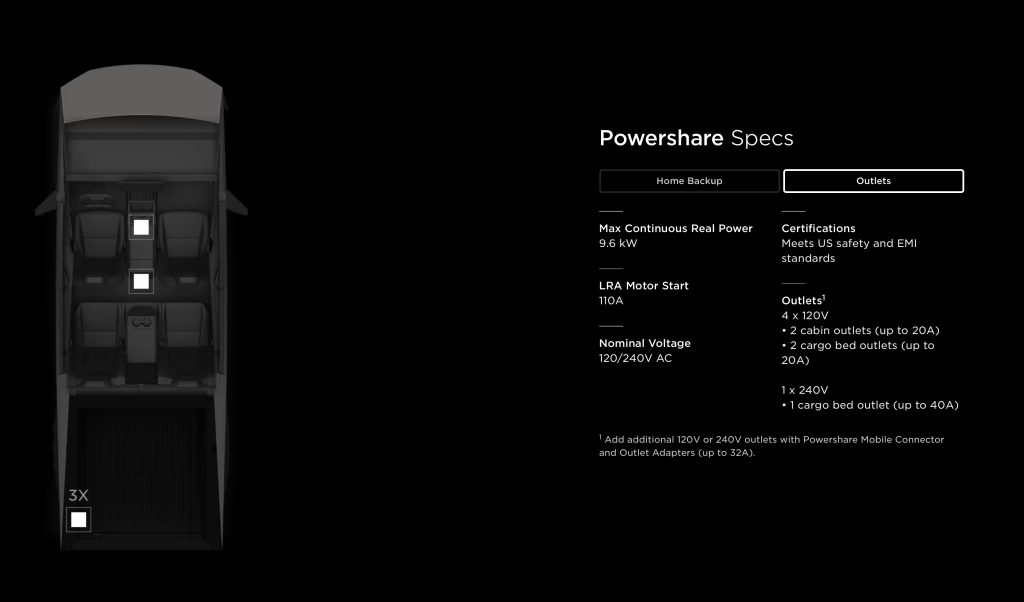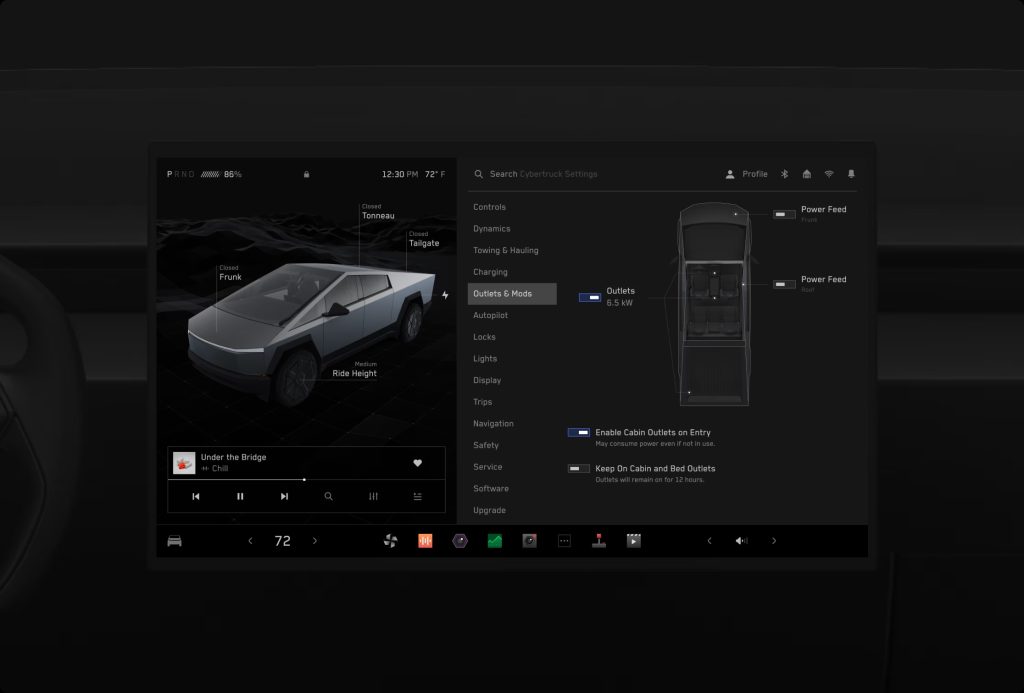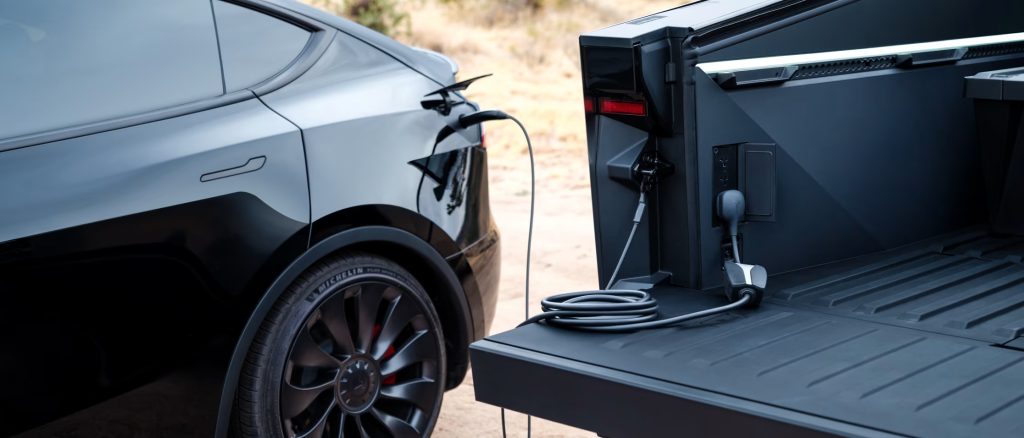
Tesla has just delivered the first Cybertrucks, and with them comes a feature that we’ve been waiting for for a while: bidirectional charging.
Tesla has talked a bit about bidirectional charging in the past but always seemed a little wishy-washy about bringing it to market. In its Investor Day presentation in March, Tesla VP Drew Baglino stated that the company could have bidirectional charging in two years, but CEO Elon Musk immediately threw some cold water on that statement, saying “I don’t think very many people are going to want to use bidirectional charging, unless you have a Powerwall, because if you unplug your car, your house goes dark, and this is extremely inconvenient.”
Now, nine months after that event, Tesla has released a vehicle that has bidirectional charging equipped – and its branding suggests that more vehicles will have the same capability in the future.
Tesla’s Cybertruck delivery event today was pretty light on details, and we’ve had to comb over the website to find out any sort of specs. On the website, we noticed one new feature that was completely absent from the presentation: Powershare.
Powershare is, apparently, Tesla’s new bidirectional charging feature, which seems to include vehicle-to-load, vehicle-to-home, and vehicle-to-vehicle capabilities (V2L, V2H, and V2V).

V2L refers to a vehicle’s capability to power equipment through five outlets – two 120 V 20 A outlets in the bed and cabin, each, and one 240 V 40 A outlet in the bed. This can be used for work equipment, camping, or other mobile power necessities (emergency response, for example).
We already learned that Cybertruck would be capable of some bidirectional charging features when specs leaked earlier this month. Those specs suggested to us that it would have ~12 kW output capability, but today, Tesla confirmed that the Cybertruck has 9.6 kW worth of continuous power combined through five outlets in the vehicle. By way of comparison, the F-150 Lightning has more outlets but the same total 9.6kW maximum draw with the upgraded Pro Power Onboard package (and 2.4 kW without).

But Cybertruck does have 11.5 kW output capability from its V2H system, which allows it to power a home in the event of a power outage or grid instability.
The Lightning can also power a home, but doing so requires an additional $3,900 unit, plus installation costs. Tesla’s solution is no different – to power your home, you will need additional equipment, seemingly in the form of Tesla’s Universal Wall Connector ($595) and Gateway ($1,800) products and, optionally, Tesla’s Backup Switch (though this may depend on your utility).
But the big difference here is the existence of the Tesla Powerwall. The company says that homes with Powerwall and Tesla’s Wall Connector installed will be ready to use Powershare without additional equipment (although it refers alternately to its Wall Connector and Universal Wall Connector, so we’re not sure which one is compatible, or both, or whether you need one made after a certain year, or what).



This is actually a huge deal because Tesla already has an installed base of Powerwall users who can plug in without having to change anything in their homes. Lightning users might be hesitant to spend another $4,000+ just to make their home more resistant to power outages, but Powerwall owners have already spent (significantly more) money on a solution that works with the bidirectional charging capability on the car.
So this would, essentially, turn a Powerwall with its 13.5 kWh worth of storage into one with 100+ kWh of storage (or whatever the size of the Cybertruck’s battery is – even after first deliveries, we still don’t know for sure).
Tesla says that Powershare can power a home for “over three days,” assuming the home uses an average of 30 kWh per day. (For reference, my home uses 10kWh per day.) This works out to a Cybertruck battery capacity of over 90 kWh but less than 120 kWh.
The Cybertruck also has a higher continuous output capability than the Powerwall, with the Cybertruck at 11.5 kW and the Powerwall at 5 kW.
So, this could be big for V2H because, previously, it has been more of a niche application. Tesla – having a market already built of houses that are V2H-capable – might see much higher usage of this capability.

Tesla also says that Powershare will be capable of V2V, or using the Cybertruck’s battery to charge another electric vehicle. We’ve seen something like this with the Lightning, where Ford cheekily released an adapter that lets its Lightning charge up Teslas that need some juice. And with a NEMA 14-50 plug in the back, which is somewhat of a “standard” for EV charging, this should be something that a lot of cars already have an adapter for – including anyone with the Tesla Mobile Connector kit which used to come with every Tesla vehicle.
As of now, Powershare is only available on the Cybertruck, but the fact that Tesla has branded it with its own name suggests that it will be available on other vehicles in the future. Tesla’s website says it’s “currently” available for Cybertruck only but doesn’t mention a timeline beyond that.
FTC: We use income earning auto affiliate links. More.

